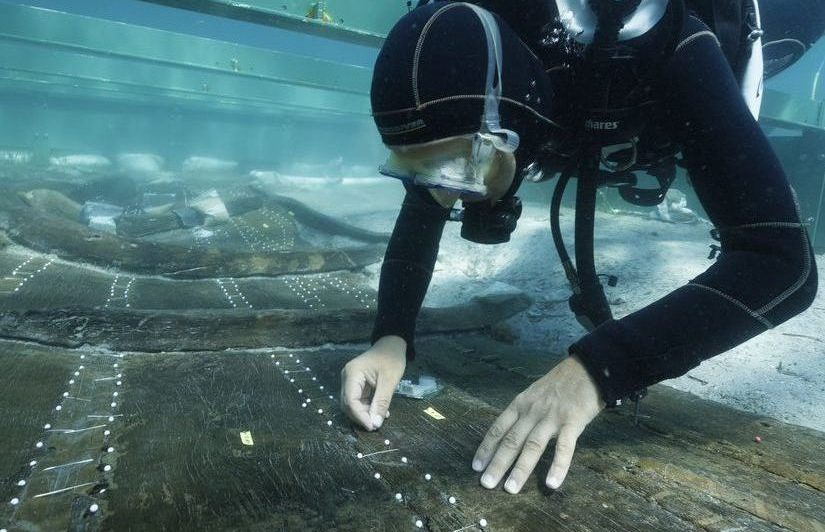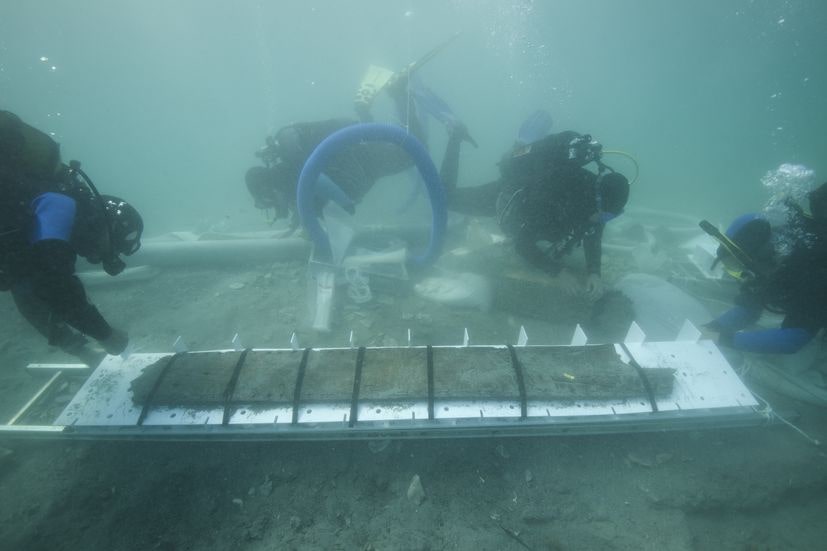
In the Mediterranean Oldest Hand-Sewn Boat is Preparing for its Next Journey
The oldest hand-sewn boat in the Mediterranean was discovered in the Bay of Zambratija near Umag on Croatia’s Istrian peninsula.
After millennia of resting undisturbed on the Adriatic seafloor in Croatia, the oldest fully hand-sewn boat in the Mediterranean is getting ready for its next voyage. This time, however, the boat—whose planks were genuinely stitched together—will go to France via land for preservation.
It was a local fisherman who alerted archaeologists to the remains of the wooden boat, scientists locating the site in 2008. However, the boat was removed from the sea in a delicate operation last July.
The Zambratija boat has demonstrated remarkable preservation, with seven of its 12-meter sections remaining intact despite its age. It is considered a rare example of the ancient shipbuilding tradition of the Istria and Dalmatia regions in Croatia and was a remarkable technological achievement for its time.
Analyses revealed that the Zambratija boat, which was found in the waters of Croatia’s northwest Istria peninsula, was made between the late 12th and late 10th century BC, marking the change from the Bronze to the Iron Age.

That makes her the oldest entirely sewn boat found in the Mediterranean so far, experts said.
“ The Zambratija boat is the oldest sewn boat in the Adriatic and the Mediterranean, dating back to the period between the last quarter of the 12th century and the last quarter of the 10th century BC. This technology was specific to this region and has no parallel examples of such an ancient boat in the world. The boat serves as the archetype for all the vessels that were later found and built in the Adriatic. The significance of this discovery is evident from the fact that the French Institute of Prehistoric Archaeology provides substantial financial support for this project. It represents not only the discovery of a material artefact but also the unveiling of a technology that is Adriatic in nature, bearing witness to our identity and craftsmanship traditions that need to be preserved and presented. This is something that our ancestors were doing 3,200 years ago,” said Darko Komšo, director of the Archaeological Museum of Istria.
Zambratija is thought to have been a mastless boat built for seven to nine rowers. Originally around 10 meters long, only a third of the vessel remains. It is thought to have been used by the Histri, a local tribe after whom Istria was named. The boat was sewn with vegetal fibres ropes, traces of which remain visible on the wood.

According to Roman-era historians the Histri used an evergreen shrub — the Spanish broom (Spartium junceum) — to sew their boats.
In later centuries, the Histri may have used such a boat for piracy in the northern Adriatic, intercepting Roman vessels carrying grain to supply their troops, the archaeologists said.
The delicate remnants will be moved to a pool within the research laboratory Arc-Nucleart, which specializes in the preservation and repair of antiquated artifacts. Once that work is done the Zambratija should be able to make a final journey home home, where it will be put on display.
Cover Photo: © Philippe Groscaux/Mission Adriboats/CNRS/CCJ
You may also like
- A 1700-year-old statue of Pan unearthed during the excavations at Polyeuktos in İstanbul
- The granary was found in the ancient city of Sebaste, founded by the first Roman emperor Augustus
- Donalar Kale Kapı Rock Tomb or Donalar Rock Tomb
- Theater emerges as works continue in ancient city of Perinthos
- Urartian King Argishti’s bronze shield revealed the name of an unknown country
- The religious center of Lycia, the ancient city of Letoon
- Who were the Luwians?
- A new study brings a fresh perspective on the Anatolian origin of the Indo-European languages
- Perhaps the oldest thermal treatment center in the world, which has been in continuous use for 2000 years -Basilica Therma Roman Bath or King’s Daughter-
- The largest synagogue of the ancient world, located in the ancient city of Sardis, is being restored











Leave a Reply